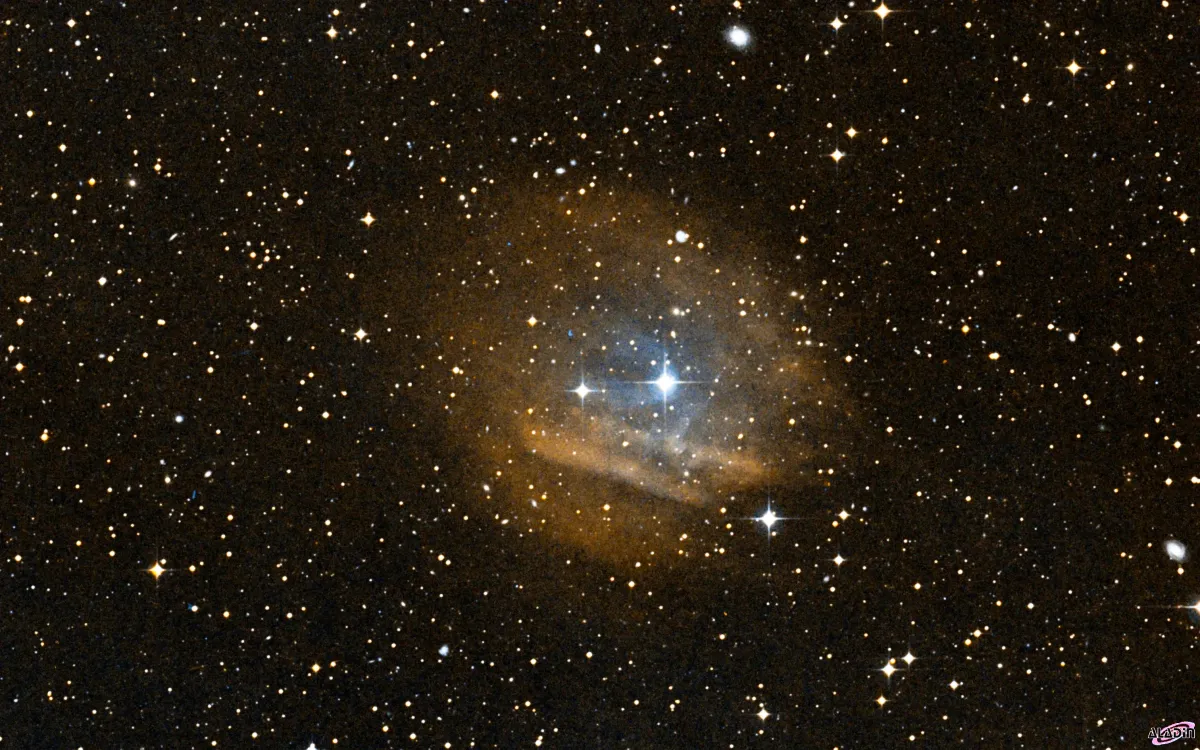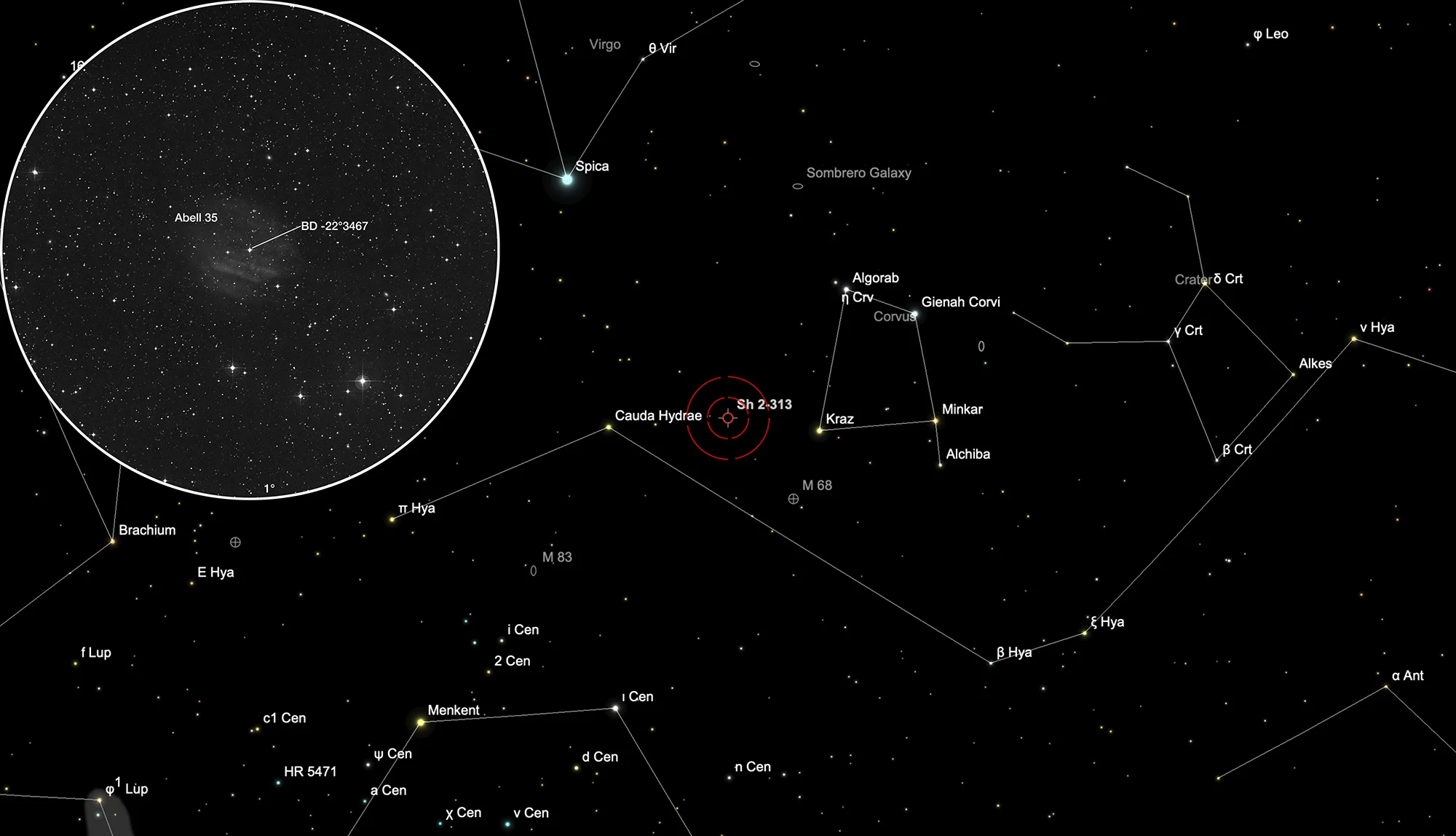Planetary Nebula Abell 35

History
The planetary nebula Abell 35 was discovered in 1955 by the American astronomer George Ogden Abell on the photo plates of the Palomar Observatory Sky Survey (POSS). In 1955 he published a first list of 13 globular clusters and the positions of 73 planetary nebulae. The PN was then listed as number 24 (A55 24). In 1966 Abell published a completed list including the size and description of the 86 planetary nebulae discovered on the POSS photo plates. The PN was then listed as nebula 35 (A66 35). He described the nebula as «a homogeneous disk.» [331, 332]
In 1959, the American astronomer Stewart Sharpless listed this nebula in his «Catalogue of H II Regions» as Sh 2-313. [310]
The designation PK 303+40.1 originates from the two Czechoslovak astronomers Luboš Perek and Luboš Kohoutek, who in 1967 compiled a catalog of all the planetary nebulae of the Milky Way known at the time. [146]
Physical Properties
The brightest star in the centre of Abell 35 is BD -22°3467 and is of spectral type G8III-IV. Photometric observations have shown light variations with a period of 0.7653 days, indicating a close orbiting binary star. Between 1986 and 1988 a decrease of maximum brightness of the system and amplitude of the light curves have been observed. This could indicate a cataclysmic binary star, where one component is a Roche-lobe-filling subgiant star and the other a white dwarf surrounded by an accretion disk. The brightness decrease could be caused by erratic dark starspots, probably linked with chromospheric activity of the G star. [188]
There are indications that Abell 35 may not be a planetary nebula after all: The binary star BD -22°3467, long thought to be the central star, may not have been massive enough to ascend the asymptotic giant branch and could have evolved directly from the extended horizontal branch to the white dwarf state. The star ionizes the ambient interstellar matter and mimics a planetary nebula. [197] According to Simbad Abell 35 is still classified as PN. Distances range from ~125 pc to 227 pc. [145]
| Designations | PN G303.6+40.0: A 35, PK 303+40.1, A55 24, Sh 2-313, VV' 112 |
| Right Ascension (J2000.0) | 12h 53m 41s |
| Declination (J2000.0) | -22° 51' 42" |
| Dimensions | 770." (optical), 700." (radio) |
| Distance | 0.36 kpc |
| Radial Velocity | -6.6 ± 3.8 km/s |
| Expansion Velocity | 4.0 (O-III) km/s |
| C-Star Designations | AG82 148, BD -22 3467, CD -22 9659, CPD -22 5522:LW Hya, SAO 181201 |
| C-Star Magnitude | U: 10.88, B: 10.53, V: 9.63 |
| C-Star Spectral Type | ? + G8 IV |
| Discoverer | ABELL 1955 |
Finder Chart
The planetary nebula Abell 35 is in the constellation Hydra. On 5 April it is in opposition to the Sun and crosses the meridian at local midnight. It is best observed from December to September.
